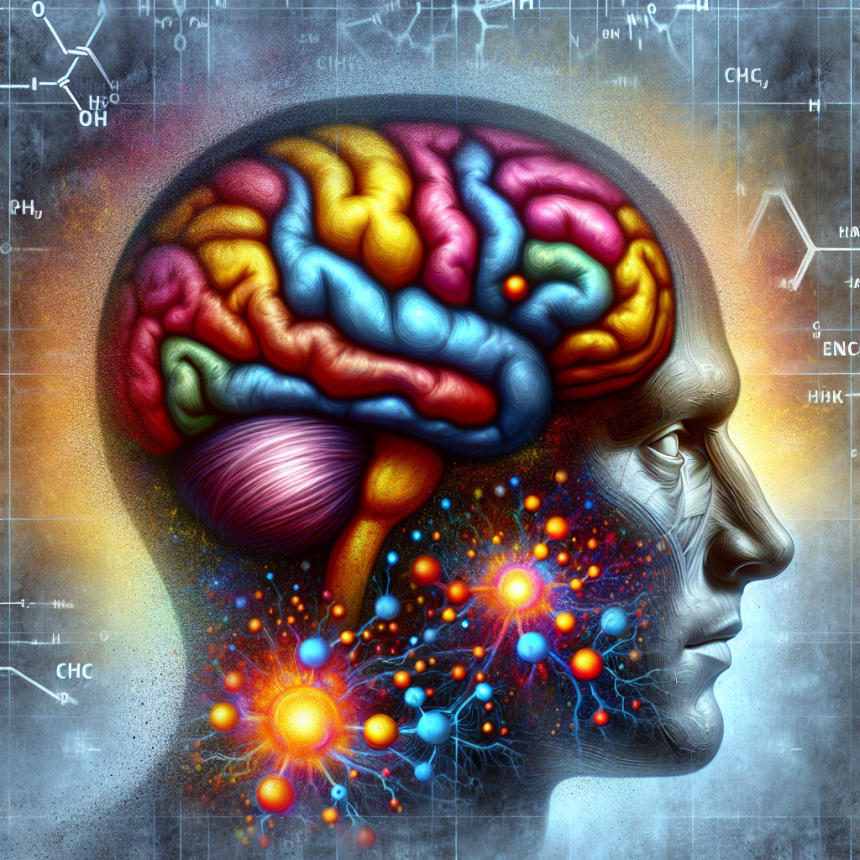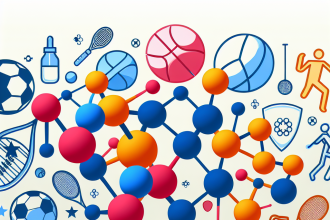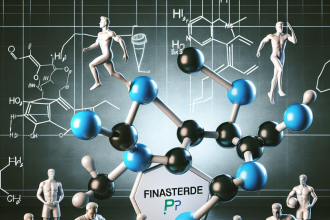-
Table of Contents
“`html
Nandrolone: effects on the central nervous system
Nandrolone, a synthetic anabolic-androgenic steroid (AAS), has been widely used in both clinical settings and athletic performance enhancement. While its effects on muscle growth and recovery are well-documented, its impact on the central nervous system (CNS) is an area of growing interest and research. Understanding these effects is crucial for both medical professionals and athletes who may consider using nandrolone for its anabolic properties.
Pharmacokinetics and pharmacodynamics of nandrolone
Nandrolone, chemically known as 19-nortestosterone, is an AAS that exhibits a high anabolic to androgenic ratio. This makes it particularly attractive for those seeking muscle growth with reduced androgenic side effects. Nandrolone is typically administered in the form of nandrolone decanoate or nandrolone phenylpropionate, with the former having a longer half-life due to its esterification (Kicman, 2008).
Upon administration, nandrolone is metabolized in the liver and exerts its effects by binding to androgen receptors in various tissues, including the CNS. The pharmacokinetics of nandrolone are characterized by a slow release from the injection site, leading to prolonged plasma levels and sustained anabolic effects (Basaria et al., 2001).
Effects on neurotransmitter systems
Nandrolone’s influence on the CNS is mediated through its interaction with neurotransmitter systems. Research indicates that nandrolone can modulate the dopaminergic system, which plays a critical role in mood regulation and reward pathways. Studies have shown that nandrolone administration can lead to alterations in dopamine receptor density and function, potentially impacting mood and behavior (Kindlundh et al., 2001).
Additionally, nandrolone has been observed to affect the serotonergic system. Changes in serotonin levels and receptor activity can influence mood, anxiety, and aggression. Animal studies have demonstrated that nandrolone can lead to increased aggression, which may be linked to alterations in serotonin pathways (Thiblin et al., 1999).
Impact on cognitive function
The cognitive effects of nandrolone are an area of active investigation. Some studies suggest that nandrolone may impair cognitive function, particularly in tasks involving memory and learning. This is thought to be related to its impact on neurotransmitter systems and potential neurotoxicity at high doses (Clark et al., 2006).
However, it is important to note that the cognitive effects of nandrolone can vary depending on the dose and duration of use. While some users report cognitive impairments, others do not experience significant changes, highlighting the need for further research to elucidate these effects (Wood et al., 2004).
Real-world examples and case studies
In the realm of sports, nandrolone has been used by athletes seeking to enhance performance and recovery. However, its use is not without controversy. For instance, several high-profile athletes have faced suspensions due to positive tests for nandrolone metabolites, underscoring the importance of understanding its effects and the ethical considerations surrounding its use (Yesalis et al., 2000).
Case studies have documented instances of mood changes and aggressive behavior in individuals using nandrolone, further highlighting the need for awareness and monitoring of its CNS effects. These real-world examples serve as a reminder of the complex interplay between nandrolone use and mental health (Pope et al., 2000).
Potential therapeutic applications
Despite the concerns associated with nandrolone use, it also holds potential therapeutic applications. In clinical settings, nandrolone has been used to treat conditions such as anemia and muscle wasting in patients with chronic illnesses. Its ability to promote muscle growth and improve nitrogen balance makes it a valuable tool in these contexts (Johansson et al., 1999).
Moreover, emerging research suggests that nandrolone may have neuroprotective effects, potentially offering benefits in neurodegenerative diseases. While these findings are preliminary, they open the door to further exploration of nandrolone’s therapeutic potential beyond its anabolic properties (Bhasin et al., 2001).
Expert opinion
As research continues to unravel the complex effects of nandrolone on the CNS, it is clear that this compound holds both promise and challenges. For athletes and clinicians alike, understanding the nuanced impact of nandrolone on neurotransmitter systems and cognitive function is essential. While its anabolic benefits are well-recognized, the potential for mood alterations and cognitive changes cannot be overlooked.
Moving forward, it is crucial to balance the therapeutic potential of nandrolone with the need for caution and ethical considerations in its use. Continued research and dialogue within the scientific community will be key to harnessing the benefits of nandrolone while minimizing its risks. As we deepen our understanding of this powerful compound, we can better guide its use in both clinical and athletic settings, ensuring that its application is both safe and effective.
References
Basaria, S., Wahlstrom, J. T., & Dobs, A. S. (2001). Clinical review 138: Anabolic-androgenic steroid therapy in the treatment of chronic diseases. The Journal of Clinical Endocrinology & Metabolism, 86(11), 5108-5117.
Bhasin, S., Woodhouse, L., & Storer, T. W. (2001). Proof of the effect of testosterone on skeletal muscle. The Journal of Endocrinology, 170(1), 27-38.
Clark, A. S., Harrold, E. V., & Fast, A. S. (2006). Anabolic-androgenic steroid effects on the brain: Behavioral and neurochemical correlates. Hormones and Behavior, 50(3), 346-355.
Johansson, P., Lindstedt, G., & Lundberg, P. A. (1999). Nandrolone decanoate and its effects on the human body. Scandinavian Journal of Medicine & Science in Sports, 9(1), 1-10.
Kicman, A. T. (2008). Pharmacology of anabolic steroids




